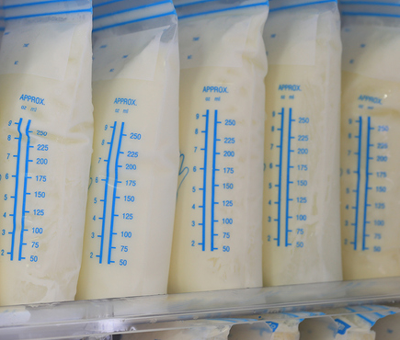Storing and Warming Breast Milk
These guidelines for storing and warming milk are for healthy term infants. Please check your hospital’s information on breast milk storage for babies who are sick or in the NICU.
How long you can store milk
 If you look up timeframes for storing breast milk, you’ll find a range. To keep this simple and easy to remember, we use the middle of the range.
If you look up timeframes for storing breast milk, you’ll find a range. To keep this simple and easy to remember, we use the middle of the range.
- Room temp (66 to 77°F): Four hours (freshly expressed breast milk)
- In refrigerator (39°F):
- Four days (freshly expressed breast milk)
- 4 hours (thawed milk from freezer)
- In freezer (one with its own door) (0°F): Six months is best, but up to 12 is acceptable.
- In cooler with ice packs (59°F): 24 hours.
- Leftover from feeding: Use within two hours of baby finishing feed.
Mixing milk expressed the same day
- You may want to mix milk expressed the same day but from different pump sessions.
- To do this, you must bring them to the same temp before mixing.
- For example: You can add fresh expressed milk to milk in the refrigerator once they have been cooled to the same temp.
- Breast milk contains live cells. To keep those cells and their benefits, you must get milk to the same temp before mixing.
Warming milk
- To warm it, use warm water or a breast milk warmer.
- Don’t microwave breast milk. This could burn baby’s mouth, and it kills the live cells in breastmilk.
- Don’t heat breast milk on the stove.
- To thaw frozen breast milk:
- Let it thaw in the refrigerator.
- Place container of breast milk under running water. Start the water cool and slowly warm it.
- It must be used within 24 hours of thawing.
- Cream rises to the top when breast milk is stored. Gently swirl milk (no shaking) to combine.
- If frozen milk is still “slushy,” you can refreeze it.
- Throw away any warmed milk baby does not take after one hour.
